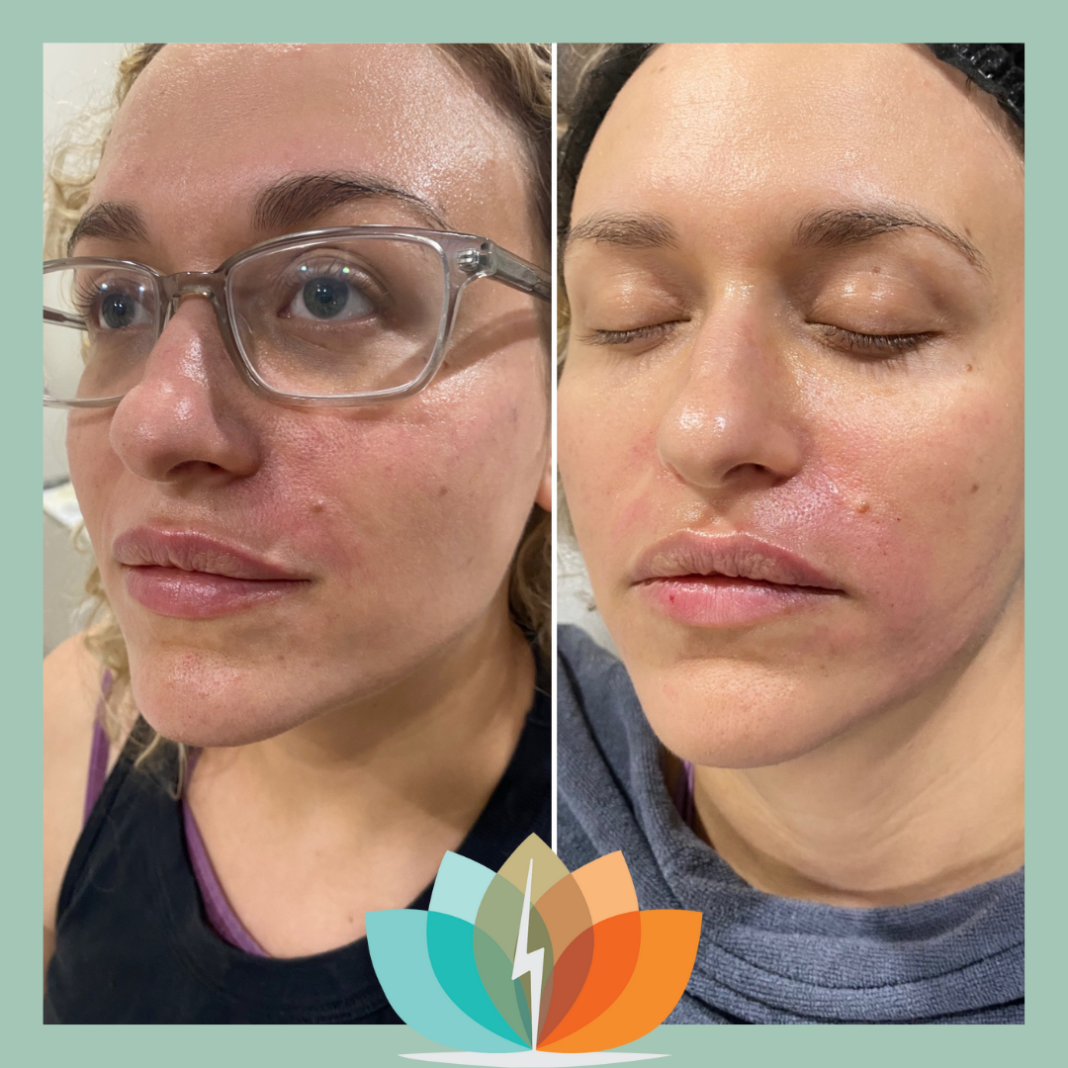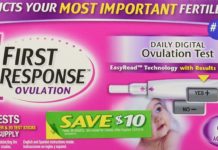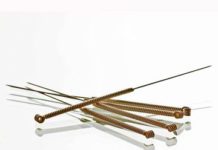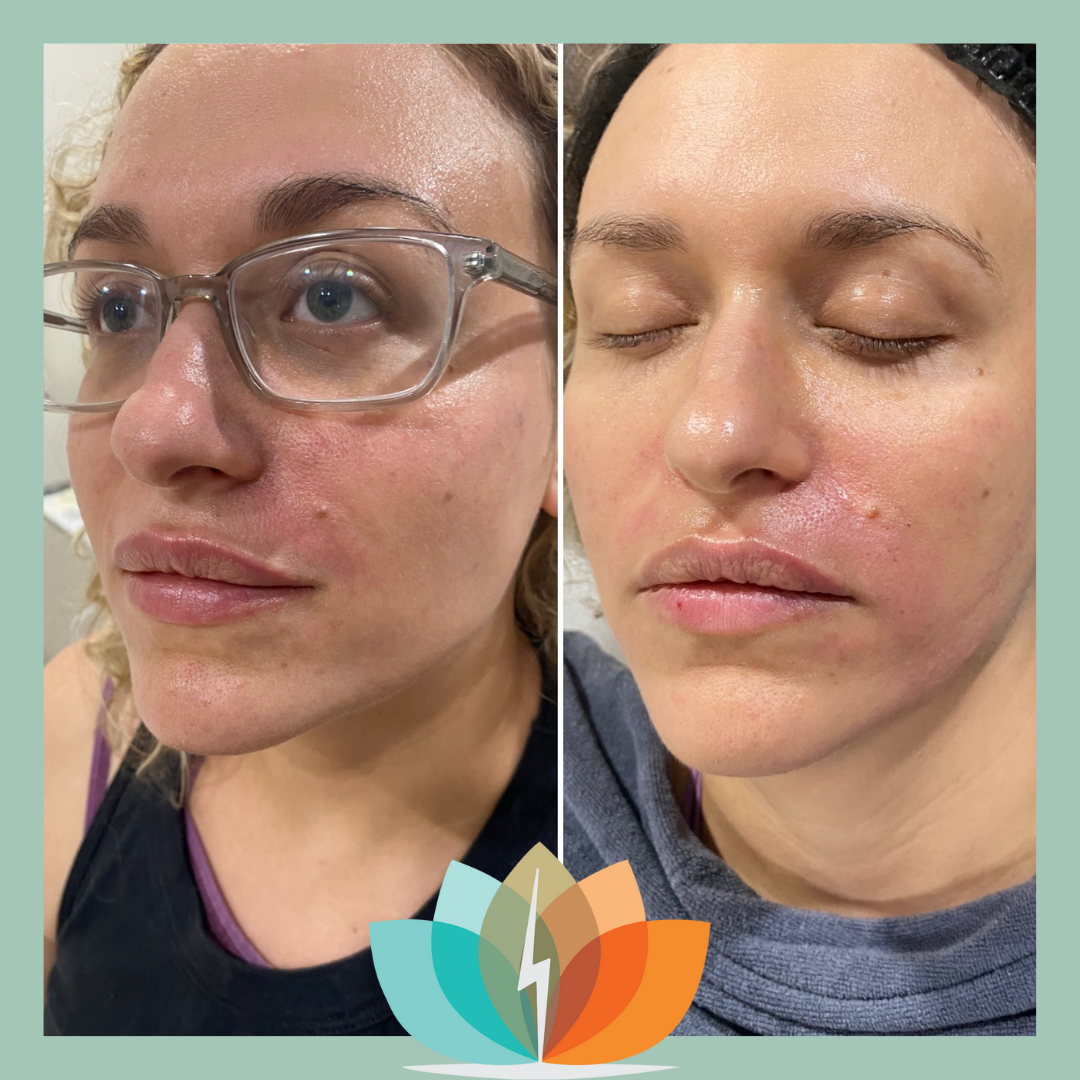
Before I was pregnant, I never needed much by way of skin treatments. But approaching a year after I gave birth, I looked at my postpartum face and was quietly horrified: spots, fine lines, dark circles from lack of sleep, and an overall feeling of gauntness. As a woman in my late 30s, I decided it was time to do some research into my options.
People have been increasingly willing to talk about cosmetic procedures, from preventative Botox becoming a favorite among Gen Z and millennials to influencers talking openly about the treatments they're getting done. Yet this transparency comes with a unique kind of vulnerability: other people feel empowered to judge freely when they deem the work overdone, botched, or not "appropriate." That last stigma especially applies to parents like me—spending money on a procedure, already deemed the height of selfishness, just doesn't fit with the stereotype of the loving and always self-sacrificial caretaker.
Postpartum can be a time of drastic face and body changes, particularly after pregnancy hormones wear off. On top of the exhaustion and constant worry of being a new parent, it can be depressing and jarring not to recognize yourself in the mirror. AnnaMaria Locilento, co-owner with Omar Wright of High Voltage Wellness and MedSpa, says she sees parents come in all the time, but they're either hesitant to be there or refuse to tell even close family members where they've gone.
"It's guilt," she explains. "They think they should be focused on their baby, not on themselves. 'I shouldn't be doing this right now'—even the time, never mind the treatment. But we all need self-care. You're leaving here refreshed, and you don't have to worry about your skin. Self-care is our motto of 2021."
When I decided it was time to prioritize myself and my skincare, I visited Locilento to see what procedures I could do that wouldn't be overly invasive. She suggested a microneedling treatment called platelet-rich plasma (PRP) facial. I was cautiously curious.
What Is Platelet-Rich Plasma?
Let's get this out of the way first: contrary to popular belief, this type of PRP facial is not the same thing as a vampire facial. The treatment burst into the public eye after the Kardashians and other celebrities posted intimidating selfies of seemingly bloody faces. The vampire facial is officially licensed by Dr. Charles Runels and involves PRP microneedling (pricking the skin with small needles) combined with blood-derived growth factors coated on the face.
PRP stimulates cell regrowth, collagen, and elastin, and is normally associated with healing wounds in the body. There are a few different ways to utilize PRP, but the procedure I got uses microchanneling directly into the skin instead of a microneedling pen that might cause microtears. My aesthetic nurse drew blood from my arm, spun it in a centrifuge to separate out the PRP, and then injected it back into my face (after first giving me a numbing agent). The process activates dermal fibroblasts, which is essential for the rejuvenation of aged skin.
"Microchanneling is more controlled and you can create cocktails tailored to what you want: pigmentation, skin health, fine lines, and so on. As the nurse gets to know what you're trying to accomplish, we build it to your needs," says Locilento. PRP is by far the most popular treatment she sees among parents, and it's in the top three for most popular procedures overall. It's worth noting, too, that dermatologists don't just see PRP facial requests from one particular gender.
The procedure is safe for new parents. "Because PRP is taking advantage of growth factors in your own blood, it's a safe option even for a postpartum mom who is breastfeeding," says New York dermatologist Hadley King, M.D. With that said, though, you shouldn't get PRP if you're currently pregnant, because there's no data around whether it's safe.
Most new parents who get PRP don't go to a dermatologist specifically for the procedure, I'm told. They usually come in—like me—feeling tired, and learn about PRP as a rejuvenation technique. If you do decide to get the facial, it's important to first make sure that your facility specializes in this type of treatment.
There should be no allergic reactions to the plasma in your own blood, but if you take supplements like fish oil or omegas, that can impact the quality of your plasma. The same applies if you have a blood disease. A facility should take a detailed personal medical history when you come in for an initial consultation, and they'll let you know if it's safe for you to do the procedure.
What PRP Procedures Are Available for Parents?
PRP is not only used in facials. At High Voltage, postpartum clients also use PRP to treat cellulite and stretch marks (deeper injections than the ones you'd get on the face) mixed with Sculptra, an injectable dermal filler, and/or Emsculpt, a muscle building and body sculpting machine. Postpartum parents also get PRP for hair loss injected directly into the scalp, designed to rejuvenate the follicles and stop breakage. Locilento says her hair loss clients see results in as fast as three weeks; she normally does six treatments then subsequent maintenance, depending on the person.
Like many cosmetic procedures, these aren't FDA-approved, and "we need more well-designed, large studies to generate high-quality data so we can really assess how effective PRP may be," says Dr. King. "I've seen the most data for hair loss and there, PRP seems to be effective for about 50 percent of people. But we still need more data to really judge."
She adds, "I've seen little data for stretch marks and PRP, I'm not sure that the results are significantly greater than resurfacing without PRP."
For a facial procedure like mine, you'd probably get a few rounds of treatments, because it can take time for your skin to accept the PRP. "The first session is your loading dose because your body has never had it before; it's absorbing all of the PRP. You're going to feel a little different, but you might not see the best results. The second: half is loaded, half is benefit. The third: all loaded, all benefit," says Stephanie Winans, RN, BSN, advanced aesthetic nurse and the person who administered my facials.
In my case, I had three treatments, each a month apart. My first treatment was PRP, with the tiniest bit of Botox to treat my pores without freezing my face. For my second treatment, Winans used apriline, a solution containing biotin, glutathione, and other nutrients and vitamins for skin brightening and tightening. It's as powerful as plasma and can be used for when clients' natural plasma is insufficient. I actually saw better results, so we used apriline for my third treatment too.
Each treatment can cost between $1,000 and $1,500—I was lucky enough to try it for free. It can be done in conjunction with ultherapy, an ultrasound machine that tightens the skin. Unlike botox or fillers, which can affect the integrity of the skin, these treatments are designed to be less invasive.
What PRP Facial Results Look Like
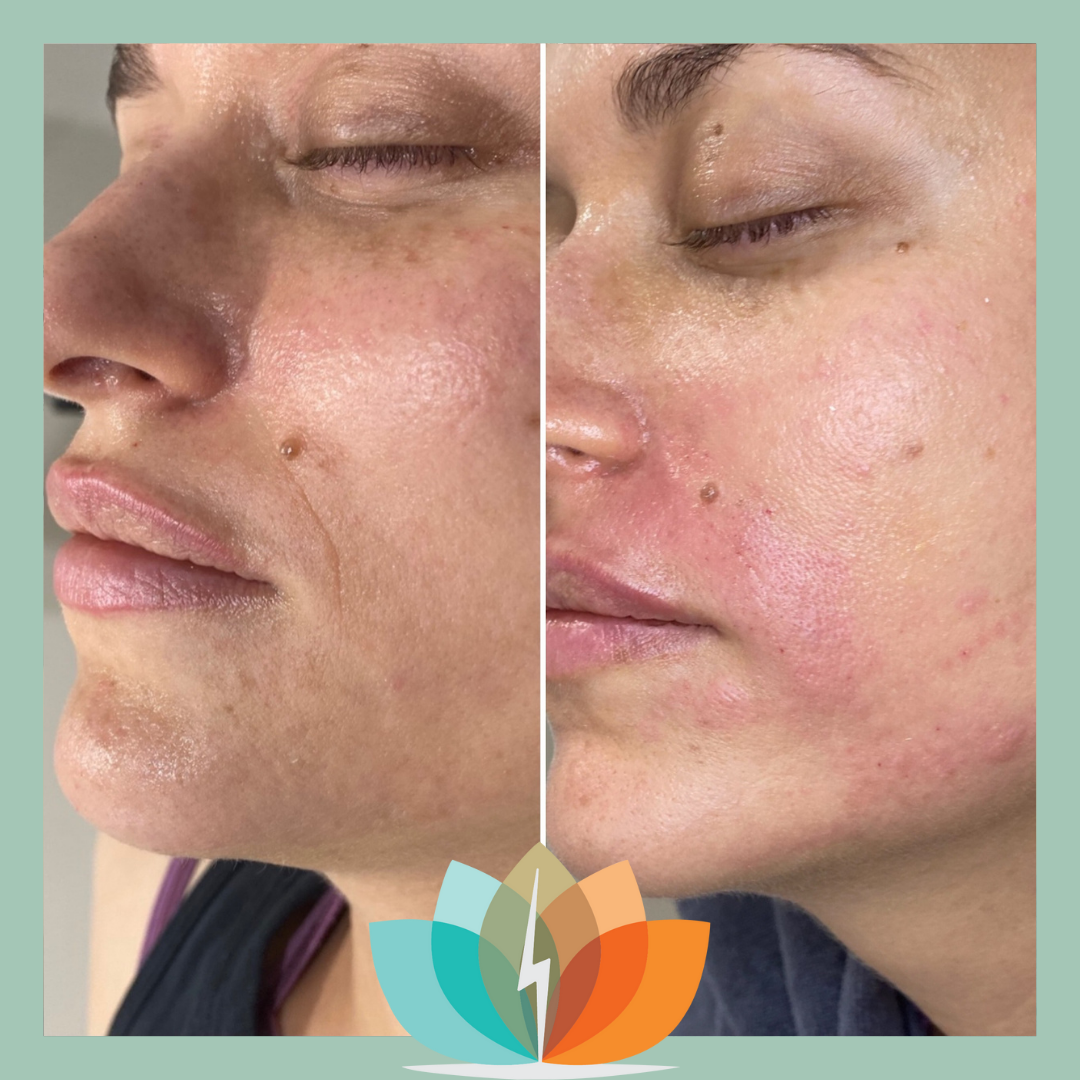
There's virtually no down-time after the procedure; my face felt numb immediately afterward, and then itchy and red for a few hours. But aside from that, it was barely noticeable, except for a bit of redness around my mouth. For two weeks, I had to avoid astringent cleansers and retinol, and was told to use sunscreen religiously.
Like most people, I started to see maximum results after 90 days, but results may vary according to the person, says Dr. King, "because they are going to depend on the quantity and quality of platelets in your blood, the growth factors present in them, and how responsive the target tissue is to those factors."
To preserve your results, it's important to drink water, eat nutrient-rich food, and continue to wear sunscreen. Depending on your lifestyle, the results can last up to 24 months, but it depends on how fast your body metabolizes the PRP. You may need spot treatments, and you can get them as often as once a month or once every two months. Locilento also recommended ultherapy in conjunction with PRP for me.
For now, I'm waiting to see how long my results last. My last session was in early September, and my skin looks brighter and softer, with fewer spots and imperfections. I feel awesome: like I turned the clock back on my skin by several years. For someone who never wore sunscreen as a kid and thus has sun damage, PRP reduced the effects and serves as a preventative measure, too. My fine smile lines have very faintly returned, but it's worth noting that as a new parent, my diet and exercise routine could still use work.
The procedure isn't a cure-all: in fact, in doing the procedure, I determined that I have rosacea that was brought on after pregnancy. My journey back towards a sense of equilibrium—where my face feels healthy, relative to my age and new role as a mom—is still ongoing. But if you're considering a procedure to make you feel and look better, to feel more like you again: I highly recommend it.


























